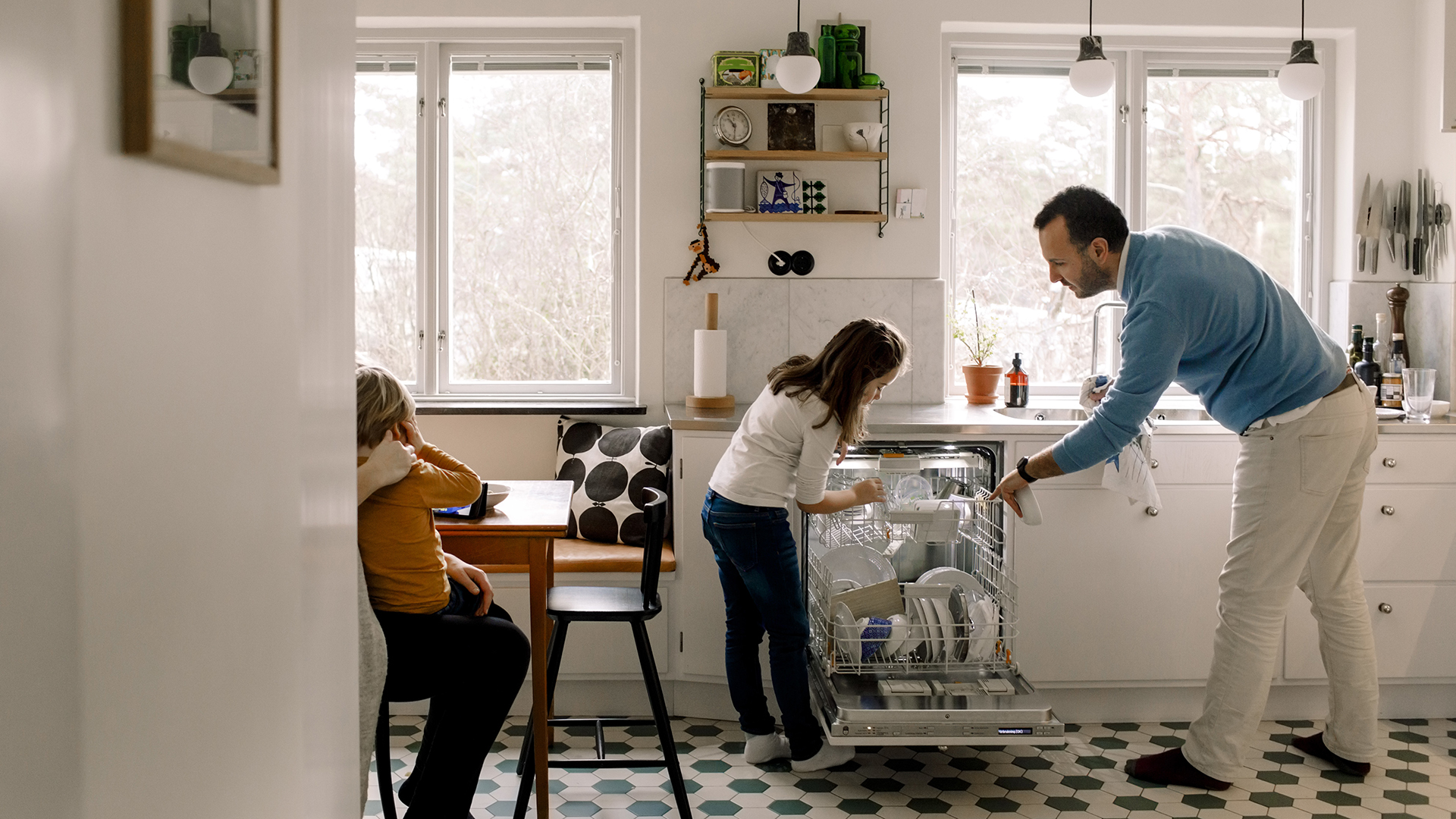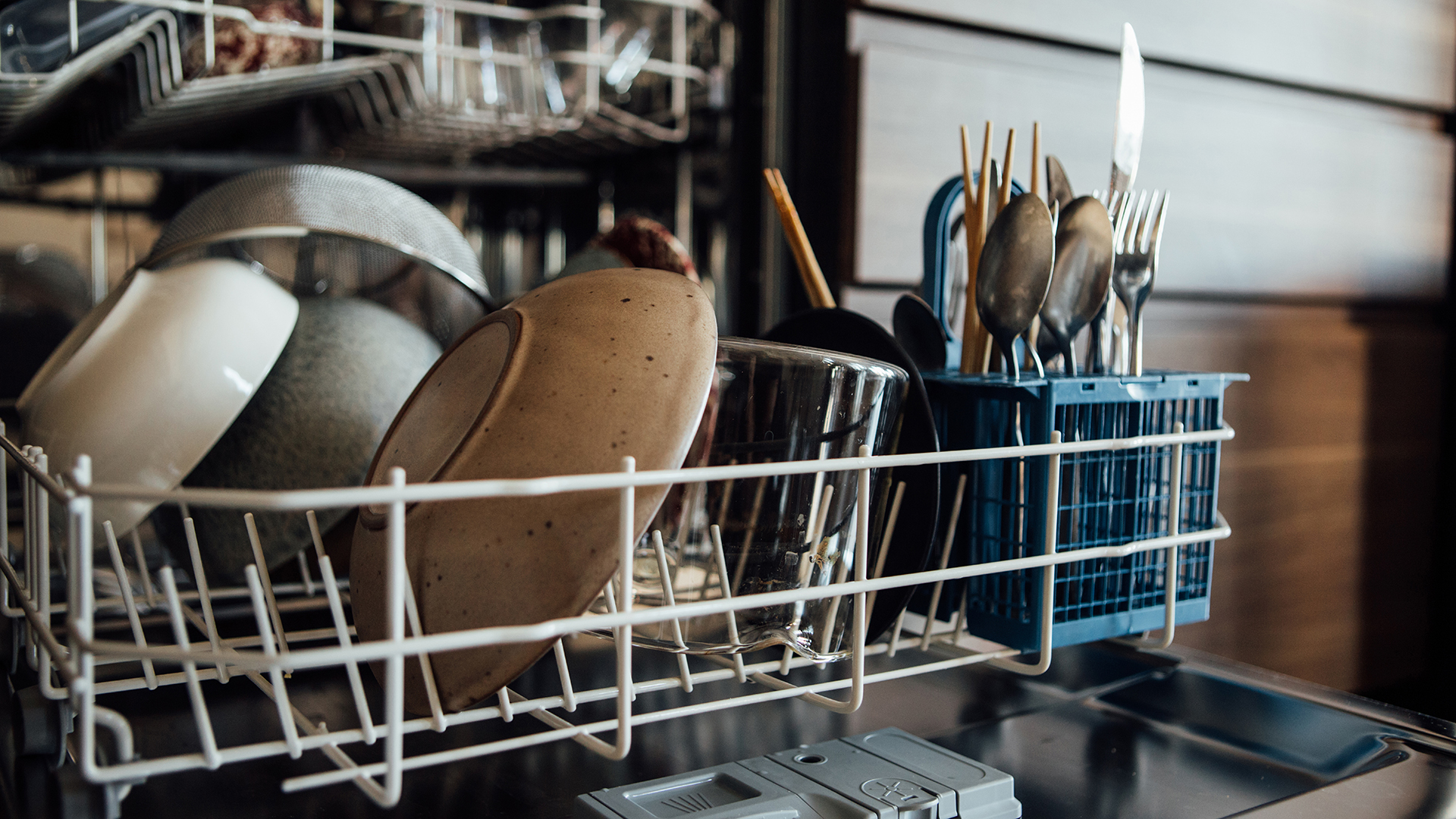Why is my dishwasher not draining? Here are the common causes for drainage issues (and how to fix them)
Here are the top 5 causes

Do you need to get your dishwasher draining? We consulted the experts to find out how to resolve this frustrating issue.
It's well-known that the best dishwashers make tidying up after meals easier, more efficient, and fuss-free. As Dmitry Letsman, Dishwashing Category Manager, Indesit, tells us: "Dishwashers can save a lot of family arguments over who has to do the washing up. The loading and unloading of the dishwasher is a much nicer task than washing up pots and pans from dinner time. It also saves worktop space – when you're cooking a meal, you can simply load the dishwasher with pots and utensils as you're finished, so nothing is hanging around waiting to be washed up."
However, when your dishwasher won't drain, the household appliance is more of a hindrance than a help. So, to help you understand why your dishwasher won't drain, we've put all the questions to the experts. Here's what they had to say…
How to fix your dishwasher not draining
1. There’s a blockage
Whether you’ve got a full-sized dishwasher or one of the best countertop dishwashers, your kitchen appliance might transform dirty dishes into clean and sparky ones in record time. But dishwashers can be prone to blockages – especially if you don’t clean your filter regularly.
Dmitry explains: “A blockage is typically the main reason a dishwasher might not drain, often it can be due to food particles building up. At the bottom of the tub inside your dishwasher, you'll see a filter – this should be cleaned regularly with warm soapy water
to keep the water flowing and allow the appliance to perform to the best of its ability.”
Sign up to receive the latest news, reviews, buying guides and deals direct to your inbox
2. The drain hose is clogged
Your drain hose is situated at the back of your dishwasher. It’s usually positioned up high as it prevents the dirty water from going back into your appliance. But sometimes the drain hose can become twisted or clogged, stopping water from draining from your machine.
To rectify this problem, Toni Yordanov, a plumber and a gas engineer at Fantastic Services, says: “Disconnect the dishwasher from the power outlet and locate the drain hose on the back. The first thing you want to inspect is if it’s not folded or bent. If that’s not the case, then you can proceed to check for clogs. Consult your manual before disconnecting it. It’s useful to have a small bowl or a bucket nearby to catch any excess water that may spill otherwise.”

3. Improper maintenance
When was the last time you cleaned your machine, performed a routine maintenance check, or emptied the drain basket? Just like any household appliance, your dishwasher needs some TLC from time to time.
“To prevent clogs and extend the lifetime of your dishwasher, make sure to perform regular maintenance,” Toni says. “That includes cleaning the filters, inspecting the hoses, and emptying the drain basket at least every couple of months.”
4. Operation errors
Like many of the best household appliances, the key to keeping your machine in good and working order is to read through the buyer’s manual and use your appliance how it’s intended to be used.
Toni says: “Make sure to follow the proper operation techniques described in your manual. Never use regular dishwashing soap, as that is likely to cause clogs and leave standing water at the bottom.”
5. Broken parts
Another reason why your dishwasher might not be draining like how it’s supposed to? It could be broken. This might be the case, especially if you’ve had your dishwasher for longer than the usual 9 years of service.
Toni says: “When a broken part is the reason, always call a licensed professional to replace it in order not to void your warranty. Listen to any unusual sounds during a cycle, like humming or clicking, and if that’s the case, you might need to have your motor or drain pump replaced.”
What to do if your dishwasher is not draining
According to Dmitry, the essential step to take if your dishwasher won’t drain is to clean the filter and check if the waste hose is blocked.
He says: “Blocked filters are at the bottom of most dishwashers, they come in three parts and are easy to remove. If you use your dishwasher regularly, you should take out the filters, clean them under the tap, and replace them every week or so.
“If you have a freestanding dishwasher, pull your dishwasher away from the wall to check if the hose is squashed; once it is back in place, all wastewater will easily wash away.”
If this doesn’t work, consider deep cleaning the garbage disposal area or double-check to see whether you have a clogged air gap or spray arm.
Toni says: “To clean, use a toothpick or an old toothbrush. If the debris is hardened, you might want to soak them in warm and soapy water first before cleaning.”
Becks is a freelance lifestyle writer who has worked extensively for Top Ten Reviews during the past year. She started her career in print journalism at a local newspaper and has since then worked across digital and social media for food titles and home interior magazines. When she’s not writing, she’s reading and when she’s not reading, she’s writing.
